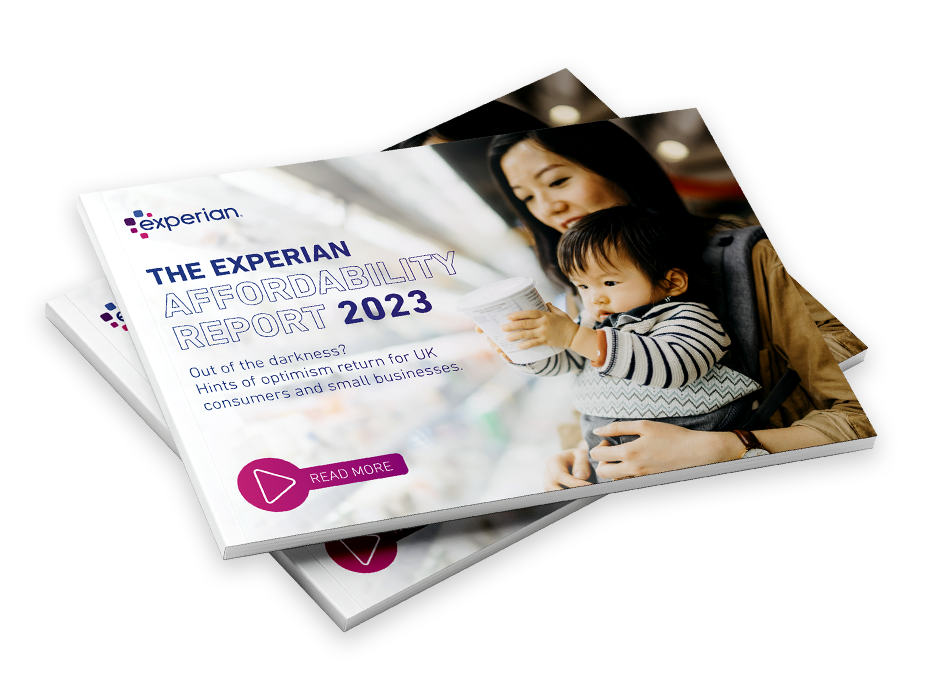Affordability is more than income verification
Measuring a consumer’s affordability is nothing new
But today’s volatile economy means that an individual’s financial situation can change quickly. Typically, we have seen those on lower incomes being the demographic that most feel the squeeze when prices rise, but there has been an incremental shift in those that are feeling the biggest hit on their expenditure.
Changes in interest rates and squeezed by increasing costs on daily essentials, consumers in higher income brackets – the Squeezed Middle – are now trying to adapt and find wriggle room by changing their spending patterns, with their disposable income being stretched by higher mortgage rates, rising food costs and persistently high utility bills.
- The average mortgage payment rose 6% between October and April
- Of 9m households, 3m saw an increase
- Mortgage to Income ratio has risen +25%
- The move to a Standard Variable Rate (SVR) mortgage means that many homeowners will face a minimum £200 increase in their monthly mortgage payments
This takes us into new territory where people are increasingly entering financial difficultly because of greater essential expenditure rather than – as we saw in the pandemic – income shocks such as redundancy were affecting people’s finances.
Consequently, affordability cannot be based on income verification alone and lending to those consumers previously considered low risk purely on verified income could be detrimental.
Household expenditure is being hit hard
- Household bills have increased for 71% of people and groceries for 61%.
- Seven out of ten consumers (69%) say it significantly impacts their finances (all figures from Experian consumer research).
- More than half of those in employment (58%) say their income cannot keep up with the rising cost of living.
Consequently, consumer buying habits are changing
- Having to spend more to cover necessities, almost half of consumers (45%) are saving less than before. Of those still saving as much, half (54%) do it to cover unexpected costs.
- 82% of consumers say they are more conscious of their spending this year, and 37% have changed how they travel or commute to save money.
- A third (34%) are changing their life plans, and a similar proportion (31%) are reconsidering where they live.
- More than half are spending less on eating and drinking out (55%), clothes (55%) and events (53%).
This complex picture of pressures and individual responses presents multiple challenges for organisations, from credit to utilities providers. It can be hard enough to get an accurate, inclusive view of an individual’s financial health at the start of the relationship when they apply for a new service or credit, but what if their financial situation changes during the term or contract? The FCA’s new Consumer Duty regulation puts a new emphasis on understanding and monitoring a consumer’s ability to afford a loan throughout the life of an agreement to ensure it delivers a good outcome for the consumer.
Today’s affordability challenge
There is no ‘one size fits all’ way of estimating expenditure. People spend differently. They have different priorities, pay different energy tariffs, and live in homes of different sizes and compositions. And when times get tough, they change their behaviours differently.
Without a clear view of essential expenditure there’s no way to know if people have the headroom to take on credit or the bandwidth to pay any existing commitments.
Many methods of calculating essential expenditure don’t tailor estimates to the individual or are based on small survey sizes. Instead, they use broad averages – from sources such as the ONS Family Spending Survey. Affordability decisions based on broad averages can lead to the wrong decisions being made, and potential consumer detriment. This is precisely why the FCA is implementing its new Consumer Duty regulation. It states that a reasonable estimate of income and expenditure at an individual level should be considered and monitored throughout the term.
But volatility in today’s incomes and spending doesn’t make meeting the Duty easy.
- 73% of lenders think the new Consumer Duty will significantly impact operations in the next 12 to 24 months (all data from Experian lender research).
- More than half (59%) say identifying vulnerable customers is more important than ever
- 30% say they will do that by checking affordability at least four times a year.
- Another 34% say they will check regularly, but fewer than four times annually.
- More than half think their data and technology need updating to be fully confident of ensuring good customer outcomes. The latest findings from the FCA published in June showed that 64% of firms surveyed said they would be fully compliant by the deadline and a further 23% said they would comply with most requirements by the deadline but would still have some work to do. 7% of firms surveyed said they would still have significant work to do after the deadline or had not started work on the Duty.
Here’s how we can help
We have made several enhancements to our bureau affordability data – Affordability IQ – that helps firms get a better understanding of an individual’s financial wellbeing and ongoing capacity to afford credit. It supports affordability assessments and drives better consumer outcomes throughout the lifecycle.
1. Household composition
A view of how many people live in each household, and their ages to enable a fairer assessment of an individual’s contribution to household bills. This is especially useful when there are a number of adults living in the same accommodation, such as students.
Indebtedness Metrics
Indebtedness metrics show the weight of debt a consumer carries in relation to their verified income. The higher the ratio, the higher the potential for financial distress. Understanding how much debt a consumer has compared to their income offers early warning of a risk they might not be able to meet their credit commitments or take on new ones.
2. Income shock and stability indicators
Track changes in an individual’s monthly income using Current Account Turnover data, identifying stability, and flagging significant change. Identify potentially vulnerable customers, provide the right support, fulfil your duty of care, and help avoid delinquency.
3. Credit card utilisation
Is a consumer using credit cards more heavily than before? Are they paying balances off in full? Are they using cash advances? Credit card utilisation metrics provide another perspective on a consumer’s financial health.
4. Balance insights
Does the consumer hold a reserve in their current account? How is that changing? This data can help inform affordability calculations and ensure decisions are made from a complete picture of the individual’s circumstances.
5. Energy expenditure model
Energy is a more and more significant category of non-discretionary expenditure. But it can be hard to determine. We’ve developed a more robust model for estimating energy expenditure when actuals are unavailable. It factors in how many people live in the household, the house’s Energy Performance Certificate (EPC) rating, how high it is above sea level (this influences average external temperatures), the number of bedrooms and other third-party data.
Tracking these metrics over time helps organisations build a rich, current picture of a consumer’s financial health, supporting affordability assessments throughout the lifecycle, and driving better consumer outcomes.
The Experian Affordability Report 2023
Fully understanding the impact of the cost-of-living crisis on consumer and small business affordability across the UK has never been more important for financial services providers.
The Experian Affordability Report for 2023 is based on a series of research surveys and interviews, conducted with UK consumers, small businesses and credit providers in April of 2023.
Read our latest research
We explore how the past few challenging years have impacted perceptions of financial stability and affordability.
Download now









